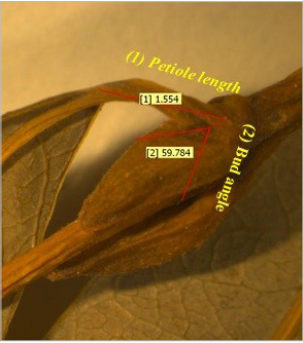This study provides a new insight into Turkish Salix L. systematics, using a molecular phylogeny and numerical morphometric analysis approach. Despite its economic importance for bioenergy, there is to date no record of any extensive study on this Turkish willow species. Twenty-four Salix species and one hybrid were subjected to molecular and morphometric evaluation, in which one gene region of the external transcribed spacer (ETS) of the 18S-26S nuclear ribosomal DNA and 11 morphological characters were analyzed using a Bayesian Analysis of Beast program and Multiple Correspondence Analysis (MCA) in R. The results indicate that Salix species in Turkey could be accurately classified at the subgenera level, considering the selected gene region and morphological traits (subgenus Salix and Vetrix). Life form, leaf shape (Dim 1) and bud scale (Dim 3) were highly discriminative at the subgenera level. The molecular and morphological data confirmed that the taxonomic position of Salix amplexicaulis needs to be changed as subgenus Salix. Additionally, the members of subgenus Salix, S. acmophylla and S. pentandroides were all clustered distantly from other species of the subgenus.
Türkiye Salix türleri: Moleküler filogeni ve morfoloji
Bu çalışma, Türk Salix L. sistematiğine moleküler filogenetik ve sayısal morfometrik analiz yaklaşımı kullanarak yeni bir bakış açısı sunmaktadır. Biyoenerjide ekonomik açıdan önemli olmasına rağmen, Türkiye Söğüt türlerinde bu güne kadar kapsamlı bir çalışma bulunmamaktadır. Çalışmada 18S-26S çekirdek ribosomal DNA ‘Eksternal transcribed spacer’ (ETS) gen bölgesi ve on bir bilgilendirci morfolojik karakter seçilerek, sırasıyla Beast programı, Bayesian ve R paketi, Multiple Correspondence Analizleri (MCA) ile yirmi dört Salix türü ve bir melezde değerlendirme yapılmıştır. Sonuçlar ışığında Türkiye’deki Salix türleri, seçilen gen bölgesi ve morfolojik özelliklere göre altcins seviyesinde düzgün bir şekilde ayrılmaktadır (Altcins Salix ve Vetrix). Hayat formu, yaprak şekli (Dim1) ve tomurcuk pulu (Dim3) altcins düzeyinde oldukça ayırt edici karakterlerdir. Moleküler ve morfolojik veriye göre Salix amplexicaulis türünün taksonomik pozisyonu altcins Salix olarak değiştirilmelidir. Ayrıca, altcins Salix üyelerinden S. acmophylla ve S.pentandroides altcinsin diğer türlerinden her zaman uzakta konumlanmaktadır.
Cite this paper as: Acar, P., Taşkıran, B., Değirmenci, F.Ö., Kaya, Z., 2020. Turkish Salix species: Molecular phylogeny and morphology. Forestist 70(2): 141-150.




.png)

